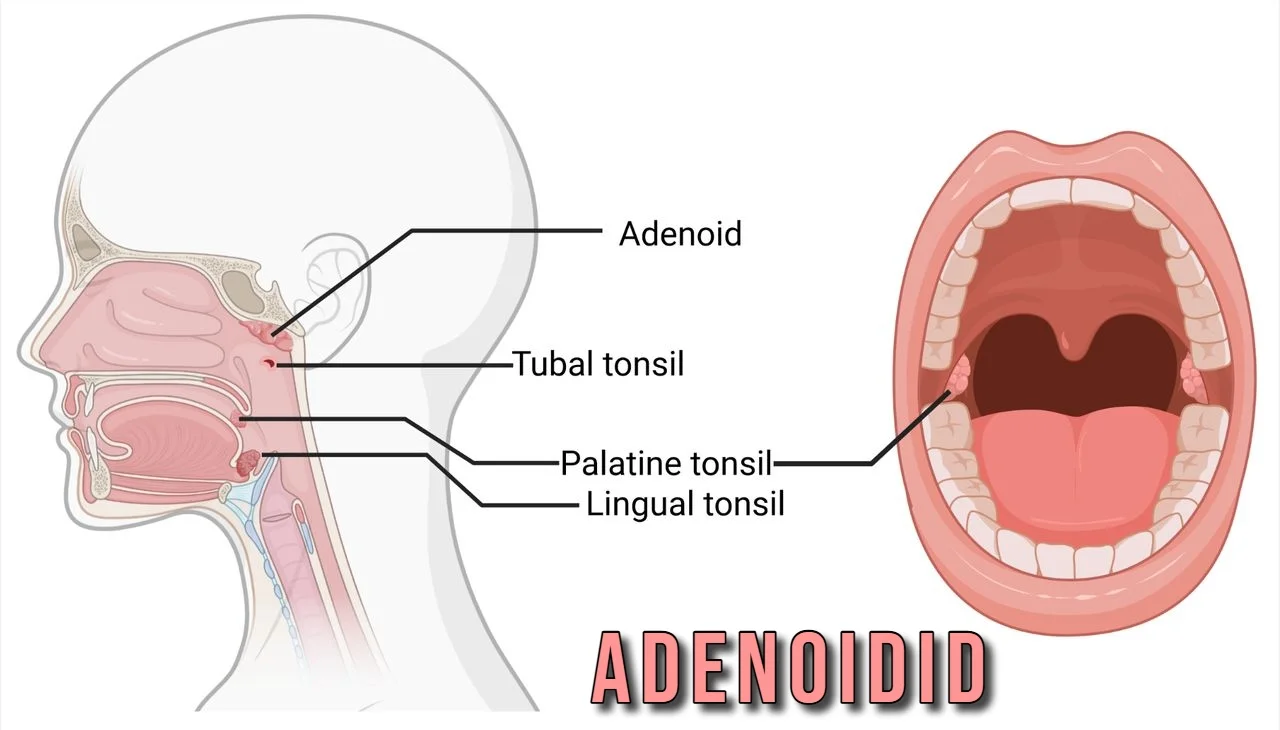Adenoids may not be a household name, but they play a significant role in the health of our children. Nestled at the back of the nasal cavity, these small masses of tissue help fight off infections during early childhood. However, when they become enlarged or infected—a condition known as adenoiditis—they can lead to a host of complications. From disrupted sleep patterns to recurring ear infections, understanding adenoiditis is crucial for parents and caregivers alike. Let’s dive into what adenoids are all about: their symptoms, causes, diagnosis, treatments options available, and how you can manage this common yet often overlooked issue effectively.
What are Adenoids?
Adenoids are small, gland-like structures located at the back of the nasal cavity. They are part of the lymphatic system, which helps in fighting off infections. These tissues are especially prominent in young children.
As children grow older, adenoids tend to shrink and may even disappear by adulthood. Their primary function is to trap pathogens that enter through the mouth or nose, acting as a first line of defense against germs.
Although they serve an important purpose during early years, enlarged adenoids can lead to various health issues. When swollen due to infection or allergies, they can obstruct airflow and contribute to breathing difficulties. Understanding their role is essential for recognizing when problems arise and seeking appropriate care.
Symptoms of Adenoiditis
Adenoiditis often presents with a variety of symptoms that can affect daily life. One common indicator is nasal congestion. This can lead to difficulty breathing through the nose, causing discomfort.
Another noticeable symptom is persistent snoring during sleep. Children may wake up frequently at night due to obstructed airflow, resulting in restless nights for both them and their parents.
You might also observe frequent ear infections or a sensation of fullness in the ears. Adenoids play a role in immune function, but when they become enlarged, they can trap bacteria and lead to these infections.
Additionally, coughing or throat irritation can occur as post-nasal drip irritates the throat walls. If your child complains about sore throats or seems more fatigued than usual, it could signal an issue related to adenoid enlargement.
Causes of Adenoiditis
Adenoiditis occurs when the adenoids, located at the back of the nasal cavity, become inflamed. This condition often arises due to infections.
Viral infections are common culprits. Cold viruses and influenza can trigger inflammation in this area. Bacterial infections, such as strep throat, may also contribute to adenoid swelling.
Allergic reactions play a significant role too. Exposure to allergens like pollen or dust mites can lead to chronic irritation of the adenoids.
Environmental factors should not be overlooked either. Secondhand smoke and air pollutants aggravate respiratory issues, increasing susceptibility to adenoid problems.
Children are particularly vulnerable due to their developing immune systems. Frequent colds and respiratory illnesses make them more likely candidates for adenoiditis compared to adults.
Diagnosis of Adenoiditis
Diagnosing adenoiditis typically starts with a thorough medical history. Your doctor will ask about symptoms, duration, and any previous health issues.
A physical examination follows. This often involves a look inside the mouth and throat to check for swelling or redness in the adenoids. Sometimes, pediatricians use a small mirror or special instruments for better visibility.
Additional tests may be necessary in certain cases. A nasal endoscopy can provide clear images of the adenoids’ condition. Imaging studies like X-rays might also help assess their size and impact on nearby structures.
In some instances, doctors may recommend allergy testing if allergies are suspected as a contributing factor. Accurate diagnosis is crucial for effective treatment options down the line.
Treatment Options for Adenoiditis
Treatment for adenoiditis often starts with conservative measures. Doctors may recommend over-the-counter pain relievers to ease discomfort. These can reduce inflammation and help manage symptoms effectively.
If symptoms persist, antibiotics might be prescribed if a bacterial infection is suspected. It’s essential to follow the treatment course as directed by your healthcare provider.
For severe or recurrent cases, surgical removal of the adenoids could be necessary. This procedure, known as adenoidectomy, helps prevent further complications and offers long-term relief.
In addition to medical treatments, maintaining good nasal hygiene can support recovery. Saline nasal sprays or rinses may clear mucus buildup and alleviate congestion.
Always consult with a healthcare professional before starting any new treatment plan for optimal care tailored to individual needs. Engaging in healthy lifestyle choices can also bolster immune function during recovery periods.
Home Remedies for Adenoiditis
Home remedies can provide relief for those suffering from adenoiditis. One effective option is steam inhalation. Breathing in warm, moist air helps soothe inflamed tissues and clears nasal passages.
Saltwater gargles are another simple remedy. Mixing salt with warm water can alleviate throat discomfort and reduce inflammation in the area around the adenoids.
Honey is a natural antibacterial agent. A teaspoon of honey can ease irritation and boost immunity, making it beneficial during recovery.
Herbal teas like chamomile or peppermint also offer comfort. These teas possess anti-inflammatory properties that may help relieve symptoms associated with adenoiditis.
Staying hydrated is crucial too. Drinking plenty of fluids keeps mucus thin, promoting easier breathing and reducing congestion.
Elevating your head while sleeping encourages better airflow through the nasal passages, providing a more restful night’s sleep.
Prevention of Adenoiditis
Preventing adenoiditis can be an essential step in ensuring your child’s respiratory health. Encouraging good hygiene practices is vital. Regular handwashing helps reduce the spread of infections that can lead to inflammation.
Keeping kids away from secondhand smoke minimizes irritants that could cause swelling in the adenoids. It’s important to create a smoke-free environment for their well-being.
Maintaining a healthy diet rich in fruits and vegetables supports immune function, which can help fend off infections. Adequate hydration also plays a crucial role; encourage plenty of water intake throughout the day.
Consider regular check-ups with healthcare providers. Early identification of any underlying issues or persistent allergies may prevent recurrent episodes of adenoiditis, helping children breathe easier and stay healthier overall.
Conclusion
Adenoidid can significantly impact a person’s health, particularly in children. Recognizing the symptoms early is crucial for effective management. From nasal congestion to chronic ear infections, the signs of adenoiditis are often overlooked but deserve attention.
Understanding the causes helps in prevention and treatment. Allergies, infections, and even genetic factors may contribute to enlarged adenoids. A proper diagnosis from a healthcare professional can lead to better outcomes.
Treatment options vary widely based on severity. While medications may relieve mild cases, surgical intervention might be necessary for more severe conditions. Alongside medical treatments, home remedies such as steam inhalation or saline nasal sprays can provide additional relief.
Preventative measures play an essential role too—maintaining good hygiene and addressing allergies promptly could prevent future issues related to adenoid inflammation.
Being informed about adenoidid empowers individuals and caregivers alike to take proactive steps toward maintaining respiratory health.

